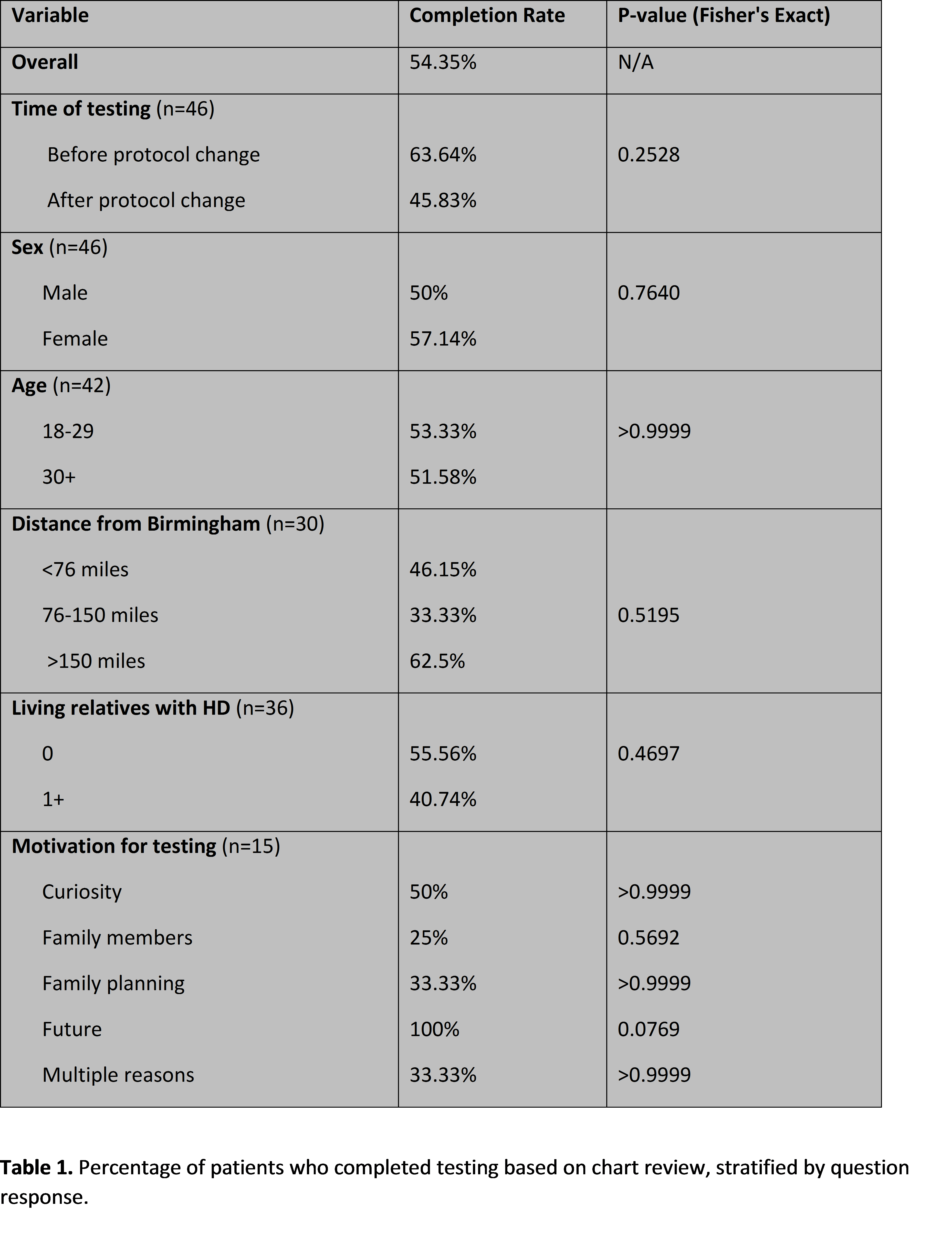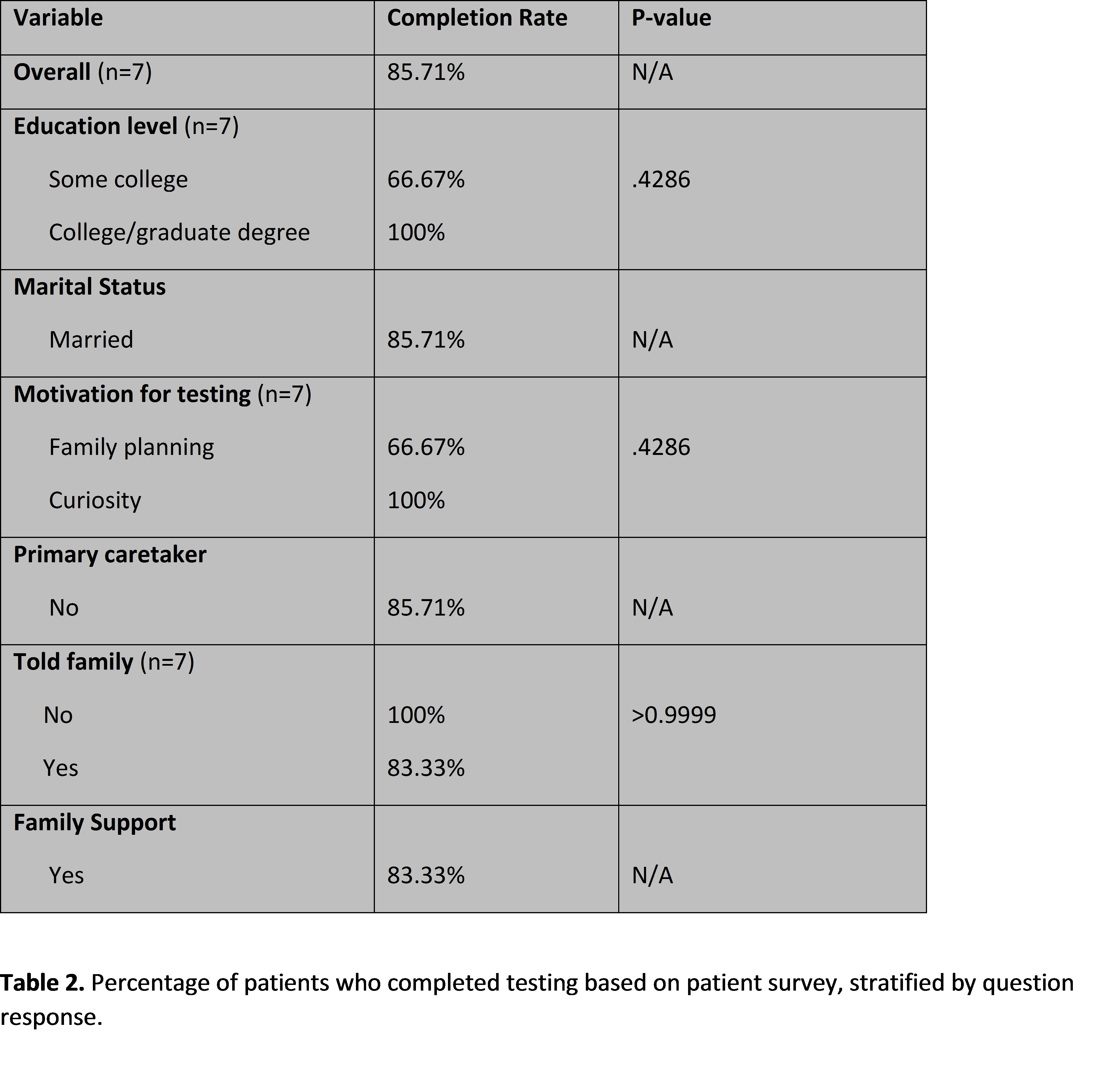Session Information
Date: Tuesday, June 6, 2017
Session Title: Huntington's Disease
Session Time: 1:45pm-3:15pm
Location: Exhibit Hall C
Objective: To determine if the new simplified testing protocol led to an increase in completion rate of predictive testing for HD, and to study some factors influencing testing process.
Background: HD is an autosomal dominant disorder with CAG triplet repeats at HTT gene presenting with motor, cognitive and psychiatric symptoms which are highly disabling. The knowledge of the causative gene has made it possible to test at-risk individuals(=have family history of HD but unknown inheritance of CAG expansion {which is 50%}), before clinical symptoms develop. International Huntington Association (IHA) and World Federation of Neurology (WFN) Research Group on Huntington’s Chorea made recommendations in 1994 regarding predictive testing. Testing process for HD is psychologically stressful. Some studies found up to 40% incompletion rates; others have shown that only 15% at-risk population undergo predictive testing.
Methods: In January 2014, testing protocol at University of Alabama (UAB) HD clinic was changed to make a new streamlined protocol requiring 3 in-person visits, with genetic counseling on phone and psychiatric evaluation via mailed questionnaire as compared to 5 visits previously. Study population consisted of all patients who began predictive testing for HD at UAB HD clinic between Aug 2009 and Oct 2015 (n=46). A chart review was done to collect age, sex, distance from clinic, when patient began testing, number of relatives with HD, if completed testing and motivation for testing. Anonymous patient based survey was emailed to all patients for whom email addresses could be found (n=11). It included questions pertaining to above along with satisfaction with testing and testing completion (reasons if not completed).
Results: 54.35% patients completed the testing before protocol change and 48.83% completed after protocol change. [Table 1] and [Table 2] summarize the results of chart review portion and patient survey portion respectively. No statistical significance was achieved for any of them.
Conclusions: Primary hypothesis that the completion rate would be increased after protocol change was rejected. Primary motivation for testing and proximity of residence to clinic (secondary hypotheses) were not statistically significant. This study is limited because of small scale and loss to follow up; more studies like this are needed to determine if national guidelines for HD testing need to change for more accessibility to patients.
References: 1. Hayden, M. (2003). Predictive testing for Huntington’s disease: a Universal model? Lancet Neurology, 2, 141-142.
2. Scuffham, T. and MacMillan, J. (2014). Huntington disease: Who seeks presymptomatic genetic testing, why, and what are the outcomes? Journal of Genetic Counseling, 23, 754-761.
To cite this abstract in AMA style:
M. Patel, V. Sung. Factors Influencing Completion of Predictive Testing for Huntington’s Disease (HD) [abstract]. Mov Disord. 2017; 32 (suppl 2). https://www.mdsabstracts.org/abstract/factors-influencing-completion-of-predictive-testing-for-huntingtons-disease-hd/. Accessed December 28, 2025.« Back to 2017 International Congress
MDS Abstracts - https://www.mdsabstracts.org/abstract/factors-influencing-completion-of-predictive-testing-for-huntingtons-disease-hd/


